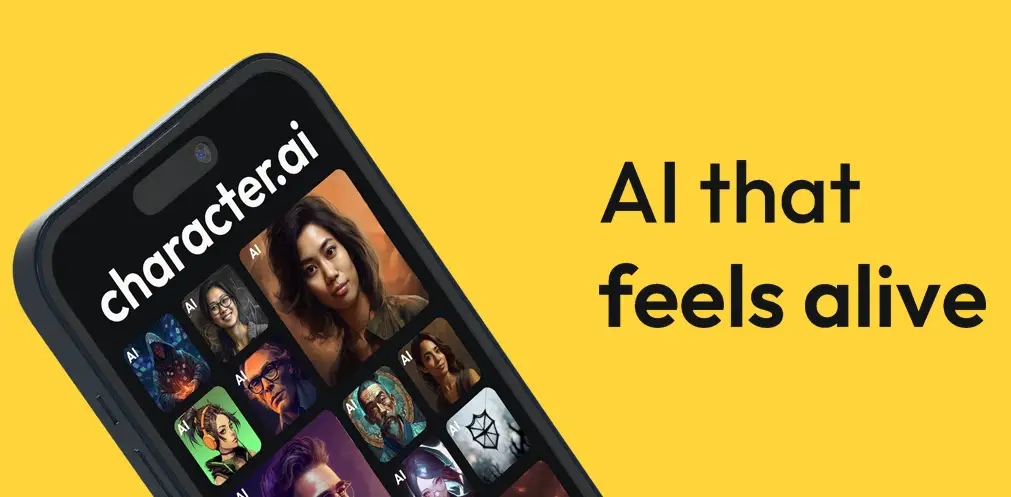When I first encountered the captivating world of character AI technology, little did I know that it held the key to unlocking not only incredible gaming experiences but also a realm of untapped business potential.
As an avid gamer and tech enthusiast, I have witnessed firsthand the evolution of artificial intelligence in shaping lifelike and interactive digital characters.
In this blog post, I will dive into the exciting realm of monetizing character AI technology, exploring its vast opportunities and sharing personal anecdotes that shed light on its transformative power.
What Is Character AI?

Imagine you’re playing a video game or watching a movie, and you see some really cool characters on the screen. They can be humans, animals, or even imaginary creatures like aliens or monsters. Character AI, which stands for Artificial Intelligence, is a technology that brings these characters to life and makes them act and behave just like real beings.
Character AI uses special computer programs and algorithms to give these characters intelligence and make them do things on their own. It’s like giving them a mind of their own! For example, a character with AI can walk, run, jump, talk, and even make decisions, just like a real person or animal would.
Let’s say you’re playing a video game with a character that has AI. You might notice that the character can move around on its own, avoid obstacles, and interact with other characters in the game. It can also respond to your actions or choices. For instance, if you’re playing a detective game and you ask the AI character a question, it can give you different answers based on what you’ve done in the game before.
In a movie, you might see characters that are not real actors but are created using computer graphics. These characters can show emotions like happiness, sadness, or fear, just like human actors would. It’s all thanks to Character AI!
Character AI is used in many other areas too, like virtual reality experiences, where you can feel like you’re inside a different world and interact with AI characters. It’s also used in simulations or training programs, where characters can mimic real-life situations and help people learn new skills or practice in a safe environment.
So, in simple words, Character AI is a technology that makes characters in games, movies, and other digital experiences act and behave like real beings. It’s pretty amazing to see how these characters come to life and make our entertainment experiences more immersive and exciting!
The Rise of Character AI
I want to share my journey as a gamer and witness the incredible advancements in character AI technology. As a young gamer, I was fascinated by the digital worlds that unfolded before me. However, the characters within those worlds felt limited in their responses and lacked depth. It was not until I encountered games with sophisticated character AI systems that I truly understood the transformative power it holds.
One of the most memorable experiences was playing a role-playing game where the NPCs displayed realistic emotions, engaging in dynamic conversations and adapting their behavior based on their actions. It was as if they had their personalities and stories to tell. These interactions immersed me in the game world like never before, leaving a lasting impression on me.
The Business Potential Unleashed With Character AI

Drawing from my observations and research, I realized that character AI technology is not limited to the gaming industry alone. Its potential extends far beyond, presenting vast opportunities for businesses to harness its power. For instance, virtual customer service representatives powered by character AI can offer personalized and engaging interactions, revolutionizing the customer experience.
Furthermore, interactive storytelling becomes more compelling when characters possess depth and emotional intelligence. By monetizing character AI, content creators can captivate audiences in new and innovative ways. I have seen companies embrace this concept, integrating character AI into their marketing campaigns, resulting in increased brand engagement and customer loyalty.
Licensing and Partnerships Of Character AI
Having explored the world of character AI, I became aware of the potential for monetization through licensing and partnerships. AI developers who have invested time and resources in creating robust character AI systems can license their technology to game developers, allowing them to enhance their games with lifelike and intelligent characters. This mutually beneficial collaboration empowers developers to focus on other aspects of game design while leveraging the expertise of character AI specialists.
Partnerships between AI developers and content creators can lead to joint ventures that generate revenue through shared resources and expertise. I have witnessed successful collaborations where character AI developers and storytellers joined forces to create immersive narratives, pushing the boundaries of what is possible in digital experiences.
AI-Powered Character Development Tools

As someone passionate about creativity and game development, I have explored the potential of AI-powered character development tools firsthand. These tools not only simplify the process of creating lifelike characters but also enable developers to infuse their creative vision into the AI system. I have experimented with animation systems and dialogue generation frameworks, marveling at the ease with which characters can be brought to life.
By providing user-friendly AI-powered character development tools, developers can monetize their expertise while empowering others to unleash their creativity. This democratization of character AI technology fuels innovation and encourages wider adoption of AI-driven characters across various industries.
Personalization and Customization Of Character AI
Personalization and customization have become key elements in capturing the attention and loyalty of consumers. With character AI, businesses can offer personalized experiences tailored to individual preferences. In the gaming industry, this means adaptive gameplay, where characters respond to the player’s choices, creating a unique and immersive adventure.
Beyond gaming, personalization through character AI can enhance e-learning experiences, delivering tailored educational content and adapting to individual learning styles. Additionally, in digital marketing, AI-powered characters can engage with customers on a personalized level, fostering a deeper connection and driving conversions.
Step-by-step Guide On How To Setup Character AI Model
Setting up Character AI can be an exciting and creative process that allows you to bring virtual characters to life. Here’s a step-by-step guide to help you get started:
Step 1: Choose the Platform Character AI is offered by various platforms and software. Research and choose the platform that best fits your needs and budget. Some popular options include Unity, Unreal Engine, and Blender.
Step 2: Install the Required Software Once you’ve selected a platform, download and install the necessary software. Make sure to check the system requirements and compatibility with your computer.
Step 3: Acquire Character Assets Next, you’ll need character assets to animate using Character AI. You can create your own characters using modeling and sculpting software or download pre-made character models from online marketplaces or free resources.
Step 4: Prepare the Character Model If you’re working with your own character model, ensure it meets the requirements for animation. The model should have a proper skeletal rig with bones and joints that can be animated. If necessary, rig and skin your character using software tools like Maya or Blender.
Step 5: Import the Character Model Open your chosen platform and import the character model into the scene. Follow the platform-specific instructions for importing assets. Ensure the model is correctly positioned and scaled within the virtual environment.
Step 6: Set up Animation Tools Character AI often comes with its own animation tools and plugins. Install and set up these tools according to the documentation provided by the platform. Familiarize yourself with the interface and available features.
Step 7: Define Character AI Parameters Each platform will have its own specific parameters for configuring Character AI. These parameters control aspects such as movement, expressions, emotions, and interactions. Refer to the platform’s documentation or tutorials to understand the available options and how to adjust them.
Step 8: Create Animation Sequences Now it’s time to create animation sequences for your character. Use the provided animation tools to define movements, gestures, facial expressions, and any other actions you want your character to perform. Experiment with different combinations and timings to achieve the desired effect.
Step 9: Test and Refine Test your character’s animations within the virtual environment. Observe how the character moves, emotes, and interacts with the surroundings. Make necessary adjustments to improve the animation quality and realism. Iterate this process until you’re satisfied with the results.
Step 10: Add Interactivity (Optional) If you want your character to interact with users or respond to specific inputs, incorporate interactivity into your project. This can involve scripting behaviors, creating dialogue systems, or integrating with other components of your virtual experience.
Step 11: Export and Deploy Once you’re happy with the character animations and interactions, export the project according to the platform’s guidelines. This may involve compiling the project into a standalone executable, packaging it for specific platforms, or integrating it into a larger project.
Step 12: Test and Iterate Test the deployed character AI in its intended environment and gather feedback from users or colleagues. Use this feedback to identify areas for improvement and iterate on the animation sequences or interactivity.
Remember, setting up Character AI requires practice and experimentation to achieve the desired results. Don’t be afraid to explore tutorials, forums, and resources provided by the platform to expand your knowledge and skills. Enjoy the process of bringing your virtual characters to life!
Overcoming Challenges and Ethical Considerations
As with any technology, character AI comes with its own set of challenges and ethical considerations. Privacy concerns arise when personal data is collected to personalize character interactions. Developers must prioritize transparency, consent, and data security to ensure the trust of their users.
Addressing bias in AI-generated characters is another significant consideration. AI systems learn from vast datasets, and if those datasets are biased, it can result in characters that perpetuate stereotypes or discrimination. Developers must take proactive measures to mitigate biases and ensure inclusive character AI design.
Throughout this journey, my insight has been shaped by an understanding that responsible innovation is essential. By striving for transparency, inclusivity, and ethical practices, we can maximize the positive impact of character AI technology while minimizing potential pitfalls.
Conclusion
In this blog post, I have shared my personal experiences and insights into the monetization of character AI technology. From witnessing the rise of character AI in gaming to exploring its potential in various industries, the transformative power of this technology is undeniable.
Through licensing, partnerships, AI-powered tools, and personalized experiences, businesses can tap into the immense value that character AI brings.
However, as we embrace the monetization potential, it is vital to remain mindful of the challenges and ethical considerations associated with character AI. By promoting transparency, addressing biases, and prioritizing responsible practices, we can ensure that character AI technology is harnessed for the benefit of all.
As we venture into the future, the monetization of character AI opens new doors for innovation, creativity, and immersive experiences. It is an exciting time when digital personalities come to life, forging deeper connections between users and the digital realm.
Let us navigate this new era with responsibility and purpose, unlocking the full potential of character AI and shaping a future where virtual characters enrich our lives and businesses thrive.
Discover more from Digital Wealth Guru
Subscribe to get the latest posts sent to your email.








Comments